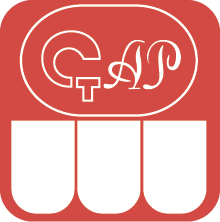DOI:
10.37988/1811-153X_2025_1_171Роль факторов вирулентности Porphyromonas gingivalis и Tannerella forsythia в патогенезе заболеваний пародонта: обзор литературы
Загрузки
Аннотация
В настоящее время культуральные и молекулярно-генетические методы исследования позволяют получить важные данные о фенотипе вирулентных штаммов для оценки их этиологической значимости в развитии патологического процесса. Факторы вирулентности микроорганизмов обеспечивают специфическое взаимодействие возбудителя с клетками пародонта, помогают уклониться или защитится от иммунных реакций макроорганизма, оказывают прямое повреждающее действие на структурную целостность и функции клеток хозяина. Изучение упомянутых биологических свойств Porphyromonas gingivalis и Tannerella forsythia позволяет прогнозировать вероятность развития заболеваний, оценивать риски возникновения осложнений при манифестации воспалительного процесса в ткани пародонта. Вместе с этим высокая вариабельность вирулентных свойств, зависимость их синтеза in vivo от других фенотипических свойств возбудителя и присутствия других микроорганизмов делают определение этиологической значимости различных факторов вирулентности пародонтопатогенов непростой медицинской задачей. Вирулентные свойства Porphyromonas gingivalis и Tannerella forsythia характеризуются не только видовой специфичностью, но и широким спектром секретируемых продуктов метаболизма, повреждающее действие которых избирательно направлено на ткани пародонта. В настоящем обзоре предпринята попытка группировать вирулентные свойства порфиромонад и форзиций по их способности к участию в патогенезе патологического процесса в ткани пародонта от колонизации до нарушения гомеостаза с характеристикой многофункциональности факторов вирулентности. Выделение наиболее важных и ключевых вирулентных свойств пародонтопатогенов может быть использовано для создания новых подходов в разработке алгоритмов этиотропной и патогенетической терапии заболеваний пародонта.Ключевые слова:
вирулентность, пародонтопатогенные бактерии, капсула, фимбриллины, пориновые белки, секретируемые белки, гликопротеины, трипсиноподобные протеиназы, гингипаины, липополисахарид, гликозидыДля цитирования
[1]
Евдокимова О.В., Котелевец Е.П., Новак А.И., Бирюков В.В. Роль факторов вирулентности Porphyromonas gingivalis и Tannerella forsythia в патогенезе заболеваний пародонта: обзор литературы. — Клиническая стоматология. — 2025; 28 (1): 171—178. DOI: 10.37988/1811-153X_2025_1_171
Список литературы
- Исмагилов О.Р., Шулаев А.В., Старцева Е.Ю., Ахметова Г.М., Березин К.А. Стоматологическая заболеваемость детей школьного возраста. — Проблемы стоматологии. — 2019; 4: 140—148. eLIBRARY ID: 42364569
- Тарасова Ю.Г., Дмитракова Н.Р. Эпидемиология заболеваний пародонта в различных населенных пунктах Удмуртской республики. — В: сб. тр. конф. «Актуальные вопросы стоматологии». — Казань: Казанский ГМУ, 2021. — С. 136—141. eLIBRARY ID: 45687205
- Eke P.I., Wei L., Thornton-Evans G.O., Borrell L.N., Borgnakke W.S., Dye B., Genco R.J. Risk indicators for periodontitis in US adults: NHANES 2009 to 2012. — J Periodontol. — 2016; 87 (10): 1174—85. PMID: 27367420
- Dahlen G., Basic A., Bylund J. Importance of virulence factors for the persistence of oral bacteria in the inflamed gingival crevice and in the pathogenesis of periodontal disease. — J Clin Med. — 2019; 8 (9): 1339. PMID: 31470579
- Nowicki E.M., Shroff R., Singleton J.A., Renaud D.E., Wallace D., Drury J., Zirnheld J., Colleti B., Ellington A.D., Lamont R.J., Scott D.A., Whiteley M. Microbiota and metatranscriptome changes accompanying the onset of gingivitis. — mBio. — 2018; 9 (2): e00575—18. PMID: 29666288
- Hiranmayi K.V., Sirisha K., Ramoji Rao M.V., Sudhakar P. Novel pathogens in periodontal microbiology. — J Pharm Bioallied Sci. — 2017; 9 (3): 155—163. PMID: 28979069
- Гимранова И.А., Хакимова Л.Р., Акмалова Г.М., Газизуллина Г.Р. Современные методы диагностики заболеваний пародонта: возможности и перспективы (обзор литературы). — Клиническая лабораторная диагностика. — 2023; 9: 570—577. eLIBRARY ID: 54394051
- Jia L., Han N., Du J., Guo L., Luo Z., Liu Y. Pathogenesis of important virulence factors of Porphyromonas gingivalis via toll-like receptors. — Front Cell Infect Microbiol. — 2019; 9: 262. PMID: 31380305
- Царев В.Н., Николаева Е.Н., Ипполитов Е.В. Пародонтопатогенные бактерии — основной фактор возникновения и развития пародонтита. — Журнал микробиологии, эпидемиологии и иммунобиологии. — 2017; 5: 101—112. eLIBRARY ID: 32628890
- Pérez-Chaparro P.J., Gonçalves C., Figueiredo L.C., Faveri M., Lobão E., Tamashiro N., Duarte P., Feres M. Newly identified pathogens associated with periodontitis: a systematic review. — J Dent Res. — 2014; 93 (9): 846—58. PMID: 25074492
- Bao K., Belibasakis G.N., Thurnheer T., Aduse-Opoku J., Curtis M.A., Bostanci N. Role of Porphyromonas gingivalis gingipains in multi-species biofilm formation. — BMC Microbiol. — 2014; 14: 258. PMID: 25270662
- Mohanty R., Asopa S.J., Joseph M.D., Singh B., Rajguru J.P., Saidath K., Sharma U. Red complex: Polymicrobial conglomerate in oral flora: A review. — J Family Med Prim Care. — 2019; 8 (11): 3480—3486. PMID: 31803640
- Закиров Т.В., Ворошилина Е.С., Брусницына Е.В., Иощенко Е.С., Канторович А.Я., Савченко Г.Д. Диагностика основных пародонтопатогенных бактерий при гингивите у детей в период раннего сменного прикуса. — Уральский медицинский журнал. — 2019; 1 (169): 19—23. eLIBRARY ID: 39538811
- Rajakaruna G.A., Negi M., Uchida K., Sekine M., Furukawa A., Ito T., Kobayashi D., Suzuki Y., Akashi T., Umeda M., Meinzer W., Izumi Y., Eishi Y. Localization and density of Porphyromonas gingivalis and Tannerella forsythia in gingival and subgingival granulation tissues affected by chronic or aggressive periodontitis. — Sci Rep. — 2018; 8 (1): 9507. PMID: 29934515
- Hajishengallis G. Periodontitis: from microbial immune subversion to systemic inflammation. — Nat Rev Immunol. — 2015; 15 (1): 30—44. PMID: 25534621
- Naginyte M., Do T., Meade J., Devine D.A., Marsh P.D. Enrichment of periodontal pathogens from the biofilms of healthy adults. — Sci Rep. — 2019; 9 (1): 5491. PMID: 30940882
- Thanetchaloempong W., Koontongkaew S., Utispan K. Fixed orthodontic treatment increases cariogenicity and virulence gene expression in dental biofilm. — J Clin Med. — 2022; 11 (19): 5860. PMID: 36233727
- Shahoumi L.A., Saleh M.H.A., Meghil M.M. Virulence factors of the periodontal pathogens: Tools to evade the host immune response and promote carcinogenesis. — Microorganisms. — 2023; 11 (1): 115. PMID: 36677408
- Li C., Yu R., Ding Y. Association between Porphyromonas gingivalis and systemic diseases: Focus on T cells-mediated adaptive immunity. — Front Cell Infect Microbiol. — 2022; 12: 1026457. PMID: 36467726
- Irshad M., van der Reijden W.A., Crielaard W., Laine M.L. In vitro invasion and survival of Porphyromonas gingivalis in gingival fibroblasts; role of the capsule. — Arch Immunol Ther Exp (Warsz). — 2012; 60 (6): 469—76. PMID: 22949096
- Polak D., Ferdman O., Houri-Haddad Y. Porphyromonas gingivalis capsule-mediated coaggregation as a virulence factor in mixed infection with Fusobacterium nucleatum. — J Periodontol. — 2017; 88 (5): 502—510. PMID: 27885964
- Davey M.E., Duncan M.J. Enhanced biofilm formation and loss of capsule synthesis: deletion of a putative glycosyltransferase in Porphyromonas gingivalis. — J Bacteriol. — 2006; 188 (15): 5510—23. PMID: 16855241
- Roky M., Trent J.O., Demuth D.R. Identification of functional domains of the minor fimbrial antigen involved in the interaction of Porphyromonas gingivalis with oral streptococci. — Mol Oral Microbiol. — 2020; 35 (2): 66—77. PMID: 31994329
- Hasegawa Y., Nagano K. Porphyromonas gingivalis FimA and Mfa1 fimbriae: Current insights on localization, function, biogenesis, and genotype. — Jpn Dent Sci Rev. — 2021; 57: 190—200. PMID: 34691295
- Naylor K.L., Widziolek M., Hunt S., Conolly M., Hicks M., Stafford P., Potempa J., Murdoch C., Douglas C.W., Stafford G.P. Role of OmpA2 surface regions of Porphyromonas gingivalis in host-pathogen interactions with oral epithelial cells. — Microbiologyopen. — 2017; 6 (1): e00401. PMID: 27595778
- Inomata M., Horie T., Into T. OmpA-like proteins of Porphyromonas gingivalis contribute to serum resistance and prevent Toll-like receptor 4-mediated host cell activation. — PLoS One. — 2018; 13 (8): e0202791. PMID: 30153274
- Sharma A. Virulence mechanisms of Tannerella forsythia. — Periodontol 2000. — 2010; 54 (1): 106—16. PMID: 20712636
- Capestany C.A., Kuboniwa M., Jung I.Y., Park Y., Tribble G.D., Lamont R.J. Role of the Porphyromonas gingivalis InlJ protein in homotypic and heterotypic biofilm development. — Infect Immun. — 2006; 74 (5): 3002—5. PMID: 16622239
- Sakakibara J., Nagano K., Murakami Y., Higuchi N., Nakamura H., Shimozato K., Yoshimura F. Loss of adherence ability to human gingival epithelial cells in S-layer protein-deficient mutants of Tannerella forsythensis. — Microbiology (Reading). — 2007; 153 (Pt 3): 866—876. PMID: 17322207
- Sharma A., Inagaki S., Sigurdson W., Kuramitsu H.K. Synergy between Tannerella forsythia and Fusobacterium nucleatum in biofilm formation. — Oral Microbiol Immunol. — 2005; 20 (1): 39—42. PMID: 15612944
- Bostanci N., Belibasakis G.N. Porphyromonas gingivalis: an invasive and evasive opportunistic oral pathogen. — FEMS Microbiol Lett. — 2012; 333 (1): 1—9. PMID: 22530835
- Castro S.A., Collighan R., Lambert P.A., Dias I.H., Chauhan P., Bland C.E., Milic I., Milward M.R., Cooper P.R., Devitt A. Porphyromonas gingivalis gingipains cause defective macrophage migration towards apoptotic cells and inhibit phagocytosis of primary apoptotic neutrophils. — Cell Death Dis. — 2017; 8 (3): e2644. PMID: 28252646
- Zhang J., Xie M., Huang X., Chen G., Yin Y., Lu X., Feng G., Yu R., Chen L. The effects of Porphyromonas gingivalis on atherosclerosis-related cells. — Front Immunol. — 2021; 12: 766560. PMID: 35003080
- Jain S., Darveau R.P. Contribution of Porphyromonas gingivalis lipopolysaccharide to periodontitis. — Periodontol 2000. — 2010; 54 (1): 53—70. PMID: 20712633
- Andrukhov O., Ertlschweiger S., Moritz A., Bantleon H.P., Rausch-Fan X. Different effects of P. gingivalis LPS and E. coli LPS on the expression of interleukin-6 in human gingival fibroblasts. — Acta Odontol Scand. — 2014; 72 (5): 337—45. PMID: 24255960
- Sochalska M., Potempa J. Manipulation of neutrophils by Porphyromonas gingivalis in the development of periodontitis. — Front Cell Infect Microbiol. — 2017; 7: 197. PMID: 28589098
- Schäffer C., Andrukhov O. The intriguing strategies of Tannerella forsythia’s host interaction. — Front Oral Health. — 2024; 5: 1434217. PMID: 38872984
- Guzik K., Bzowska M., Smagur J., Krupa O., Sieprawska M., Travis J., Potempa J. A new insight into phagocytosis of apoptotic cells: proteolytic enzymes divert the recognition and clearance of polymorphonuclear leukocytes by macrophages. — Cell Death Differ. — 2007; 14 (1): 171—82. PMID: 16628232
- de Diego I., Veillard F., Sztukowska M.N., Guevara T., Potempa B., Pomowski A., Huntington J.A., Potempa J., Gomis-Rüth F.X. Structure and mechanism of cysteine peptidase gingipain K (Kgp), a major virulence factor of Porphyromonas gingivalis in periodontitis. — J Biol Chem. — 2014; 289 (46): 32291—32302. PMID: 25266723
- Potempa J., Pike R., Travis J. The multiple forms of trypsin-like activity present in various strains of Porphyromonas gingivalis are due to the presence of either Arg-gingipain or Lys-gingipain. — Infect Immun. — 1995; 63 (4): 1176—82. PMID: 7890369
- Potempa J., Pike R., Travis J. Titration and mapping of the active site of cysteine proteinases from Porphyromonas gingivalis (gingipains) using peptidyl chloromethanes. — Biol Chem. — 1997; 378 (3—4): 223—30. PMID: 9165075
- Tomi N., Fukuyo Y., Arakawa S., Nakajima T. Pro-inflammatory cytokine production from normal human fibroblasts is induced by Tannerella forsythia detaching factor. — J Periodontal Res. — 2008; 43 (2): 136—42. PMID: 18302614
- Oido-Mori M., Rezzonico R., Wang P.L., Kowashi Y., Dayer J.M., Baehni P.C., Chizzolini C. Porphyromonas gingivalis gingipain-R enhances interleukin-8 but decreases gamma interferon-inducible protein 10 production by human gingival fibroblasts in response to T-cell contact. — Infect Immun. — 2001; 69 (7): 4493—501. PMID: 11401991
- Hamlet S.M., Ganashan N., Cullinan M.P., Westerman B., Palmer J.E., Seymour G.J. A 5-year longitudinal study of Tannerella forsythia prtH genotype: association with loss of attachment. — J Periodontol. — 2008; 79 (1): 144—9. PMID: 18166104
- Inagaki S., Onishi S., Kuramitsu H.K., Sharma A. Porphyromonas gingivalis vesicles enhance attachment, and the leucine-rich repeat BspA protein is required for invasion of epithelial cells by Tannerella forsythia. — Infect Immun. — 2006; 74 (9): 5023—8. PMID: 16926393
- Maiden M.F., Pham C., Kashket S. Glucose toxicity effect and accumulation of methylglyoxal by the periodontal anaerobe Bacteroides forsythus. — Anaerobe. — 2004; 10 (1): 27—32. PMID: 16701497
- Settem R.P., Honma K., Shankar M., Li M., LaMonte M., Xu D., Genco R.J., Browne R.W., Sharma A. Tannerella forsythia-produced methylglyoxal causes accumulation of advanced glycation endproducts to trigger cytokine secretion in human monocytes. — Mol Oral Microbiol. — 2018; 33 (4): 292—299. PMID: 29573211
- Kato H., Taguchi Y., Tominaga K., Umeda M., Tanaka A. Porphyromonas gingivalis LPS inhibits osteoblastic differentiation and promotes pro-inflammatory cytokine production in human periodontal ligament stem cells. — Arch Oral Biol. — 2014; 59 (2): 167—75. PMID: 24370188
- Hieke C., Kriebel K., Engelmann R., Müller-Hilke B., Lang H., Kreikemeyer B. Human dental stem cells suppress PMN activity after infection with the periodontopathogens Prevotella intermedia and Tannerella forsythia. — Sci Rep. — 2016; 6: 39096. PMID: 27974831
- Takemoto T., Kurihara H., Dahlen G. Characterization of Bacteroides forsythus isolates. — J Clin Microbiol. — 1997; 35 (6): 1378—81. PMID: 9163447
- Hajishengallis G., Lamont R.J. Polymicrobial communities in periodontal disease: Their quasi-organismal nature and dialogue with the host. — Periodontol 2000. — 2021; 86 (1): 210—230. PMID: 33690950
- Olsen I., Potempa J. Strategies for the inhibition of gingipains for the potential treatment of periodontitis and associated systemic diseases. — J Oral Microbiol. — 2014; 6: 6. PMID: 25206939
- Jung Y.J., Jun H.K., Choi B.K. Gingipain-dependent augmentation by Porphyromonas gingivalis of phagocytosis of Tannerella forsythia. — Mol Oral Microbiol. — 2016; 31 (6): 457—471. PMID: 26434368
Загрузки
Поступила
09.12.2024
Принята
21.02.2025
Опубликовано
07.04.2025











